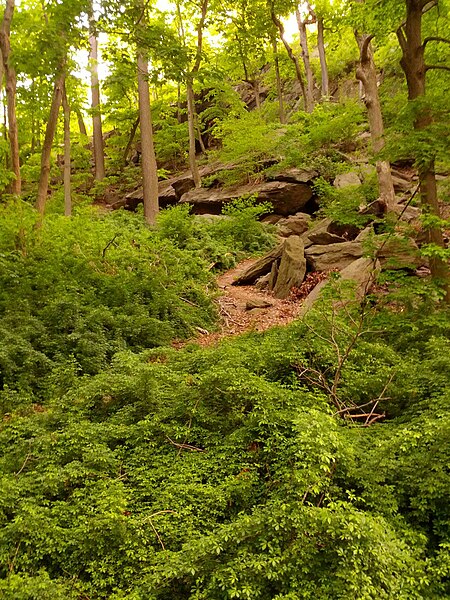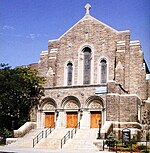Inwood Hill Park
1926 establishments in New York CityHarlem RiverIndividual trees in New York CityInwood, ManhattanNature centers in New York City ... and 4 more
Parks in ManhattanUrban public parksUse mdy dates from September 2019Works Progress Administration in New York City

Inwood Hill Park is a public park in the Inwood neighborhood of Manhattan, New York City, operated by the New York City Department of Parks and Recreation. On a high schist ridge that rises 200 feet (61 m) above the Hudson River from Dyckman Street to the northern tip of the island, Inwood Hill Park's densely folded, glacially scoured topography contains the largest remaining old-growth forest on Manhattan Island, known as the Shorakapok Preserve after an historic Wecquaesgeek village. Unlike other Manhattan parks, Inwood Hill Park is largely natural and consists of mostly wooded, non-landscaped hills.
Excerpt from the Wikipedia article Inwood Hill Park (License: CC BY-SA 3.0, Authors, Images).Inwood Hill Park
Henry Hudson Parkway, New York Manhattan
Geographical coordinates (GPS) Address Nearby Places Show on map
Geographical coordinates (GPS)
| Latitude | Longitude |
|---|---|
| N 40.872458 ° | E -73.925886 ° |
Address
Henry Hudson Parkway
Henry Hudson Parkway
10034 New York, Manhattan
New York, United States
Open on Google Maps










